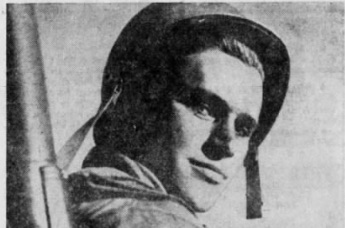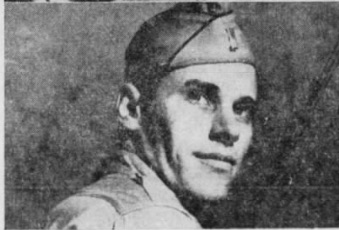![]()
They Fought in the Bloodiest Battles of World War II
By Nick Lamberto
Many of them came from Iowa communities; some had never traveled beyond the next farm or a neighboring city or town before they joined the Army.
But before the end of World War II, these same men – members of the U.S. Army Rangers – had participated in seven invasions, leaving a trail of bravery and blood from the sands of North Africa and the scraggy cliffs of Normandy to the jungle trails of Luzon in the Phillippines.
[excerpted]
Rugged Training.
. . . . Some received early training in the swamps of Louisiana before America entered World War II following the Japanese attack on Pearl Harbor Dec. 7, 1941.
“Those were the days in 1940 and 1941 when we thought we could serve our year under Selective Service and get out,” said one Ranger. There even was a song, “Goodbye, Dear. I’ll be back in a Year.” But when war came many of us ended up serving four and five years.”
For Americans, World War II lasted from Dec. 7, 1941, until Sept. 2, 1945, when Japan surrendered. (Germany surrendered May 7, 1945.)
Iowa’s 34th Infantry Division, originally a National Guard unit, and the First Armored Division furnished cadre members for the newly formed Rangers when they started training at Achnicarry, Scotland, in the summer of 1942. At least two men died in training there.
Killed in Italy.
The Rangers trained under the British commandos with intensive schedules laid down by Col. William O. Darby, a West Point graduate credited with organizing the First Ranger Battalion in Northern Ireland June 19, 1942. Darby was killed in Italy in 1944, two days before all enemy forces in Italy surrendered.
Enemy Fire.
The Rangers’ first taste of combat came on Aug. 19, 1942, when 51 of them were among the 5,000 Allied troops, mainly Canadians, who went ashore at Dieppe, France, in the face of intense enemy fire. At least four Iowans were on the Dieppe raid – Leonard Dirks of Akron, Lester E. Kness of Des Moines, Franklin M. (Zip) Koons of Swea City, and Gino Mercuriali of Cedar Rapids.

Lt. Gino Mercuriali of Cedar Rapids was featured in a Life magazine story July 31, 1944. In the “before” photo, top, he is described as unlined, boyish. In the “after” picture, below, he is described as wiser and older. |

Before the D-Day invasion, Rangers had participated in invasions of North Africa, Sicily, Salerno and Anzio (in Italy.) Later they took part in invasions of Leyte and Luzon in the Philippines. They participated in major battles at Arzew, Dernia Pass, El Guettar, Gela, Licata, Porto Empodocile, Butera, Messina, Chiunzi Pass, Venafro, San Pietro, Cisterna, Omaha Beach, Vierville, Grancamp, La Coquet Peninsula, Brest, Huertgen Forest, Point Du Hoc, Hill 400 and 105, Zerf, Oberleuken, the Bulge, Leyte and Manila.
In a commemorative book about the Rangers, James J. Altieri, a Ranger himself, said:
“What best exemplified the spirit and loyalty of Rangers was the exceedingly large number of hospital AWOLs (absent without leave) whenever the battalions went into battle. These were called ‘AWOLs in reverse’ because instead of going ‘over the hill’ to evade battle, they would leave comparative safety to join buddies on the firing lines.”
Source: The DesMoines Register, Sunday, July 27, 1975 p. 21 (photos included)
![]()
Gino Mercuriali was born Sept. 19, 1920 to Celso and Anna Montrano Mercuriali. He died Jan. 9, 2006 and is buried in Memorial Park Cemetery, Sioux City, IA.
Lt. Mercuriali served with the U.S. Army in World War II with Col. William O. Darby’s First Ranger Battalion, training in Morocco and preparing for the invasion of Sicily and Italy. Lt. Mercuriali served in 5 different Ranger companies during WWII. He was also pictured on the cover of Life Magazine during the war in a feature on the Rangers. He was often known to his Ranger Comrades as “Big Mercy”. He was awarded the Bronze Star.
Source: ancestry.com
![]()
